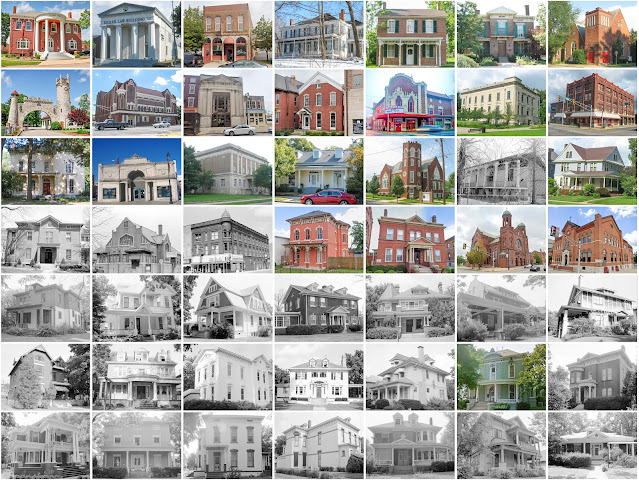Vigo County, Indiana
Founding: 1818
Parent county: Sullivan
Namesake: Francis Vigo, Italian–American soldier
Seat: Terre Haute (1818–)
Seat: Terre Haute (1818–)
Land area: 403 square miles
Population (2020): 106,153
Population (historic): 3,390 (1820); 15,289 (1850); 33,549 (1870); 62,035 (1900); 98,861 (1930)
Periods of population growth: pre-1820–1920; 1930–1970; 2000s
Subdivisions: One city; three towns; eight CDPs; 12 townships
Pre-1940 residences (estimated): 12,789 (27.3%)
Pre-1940 housing survival rate: 45.9%
Pre-1860 housing survival rate (1940): 7.6%
Pre-1940 housing survival rate: 45.9%
Pre-1860 housing survival rate (1940): 7.6%
Farm housing in disrepair (1950): 8.6%
Nonfarm housing in disrepair (1950): 9.2%
Average farmhouse value (1930): $1,090
Average outbuilding value (1930): $702
Average farmhouse value (1930): $1,090
Average outbuilding value (1930): $702
Average farmhouse size (1940): 5 rooms
Number of farms (1920): 2,770
Average farm size (1920): 65 acres
Sources of settlement: Ohio, Illinois, Germany, Kentucky, Ireland, and Pennsylvania
Number of farms (1920): 2,770
Average farm size (1920): 65 acres
Sources of settlement: Ohio, Illinois, Germany, Kentucky, Ireland, and Pennsylvania
___________________________________________________________________________________
Terre Haute
Namesake: A French term meaning "high ground"
Founding: 1816 (platting); 1818 (post office); 1832 (incorporation)
Population (2020): 58,389
Population (historic): 4,051 (1850); 16,103 (1870); 36,673 (1900); 62,810 (1930)
Periods of population growth: pre-1850–1920; 1940–1960; 1990–2010
Pre-1940 residences (estimated): 9,655 (37%)
Pre-1940 residences (estimated): 9,655 (37%)
___________________________________________________________________________________
___________________________________________________________________________________


Comments
Post a Comment